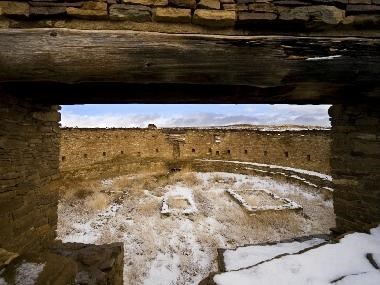
Tyler Nordgren In 1987 Chaco Culture was inscribed on the UNESCO World Heritage List as an outstanding example of world cultural patrimony. Chaco is still managed by the National Park Service, but the World Heritage designation is an additional honor meant to recognize the uniqueness of the civilization centered at Chaco Canyon from 850AD to 1250AD. Today the park is one of only twenty World Heritage sites in the U.S.
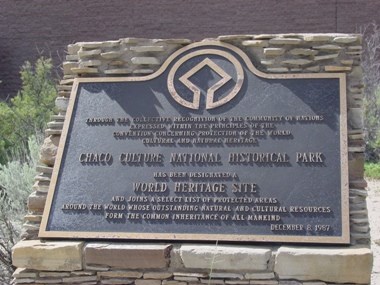
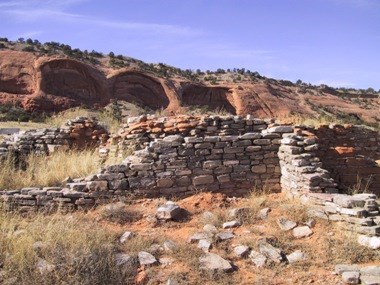
Indeed, Chacoan civilization reached much further than the walls of the canyon. Roads as wide as 30 feet led out of Chaco to the north and the south. Other roads connected ourlying great houses such as Kin Klizhin, Kin Bineola, Kin Ya'a, and Pueblo Pintado. 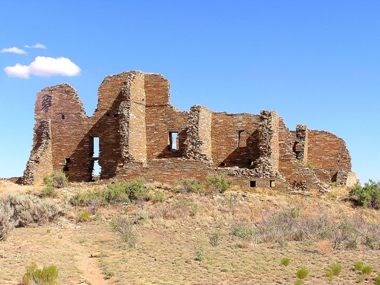
Kirk Peterson Signal towers or cairns speckled the mesa tops and could have been used for groups to communicate over long distances. At the height of the civilization, Puebloan architecture covered a vast area around Chaco Canyon with thousands of people regularly flooding into what is the present-day park. Uniting this whole system through the World Heritage designation is a way to appreciate the geographic reach of Chacoan society. International recognition is also a way to put the social, political, and economic life at Chaco into a global context. Archaeological evidence indicates that the Puebloans traded extensively with the peoples of Mesoamerica because macaws, parrot feathers, conch shells, and copper bells have all been found buried in Chacoan great houses. Recent chemical testing on pot sherds from cylinder jars indicates that the Puebloans even imported chocolate from Mexico. This trade network included modern-day World Heritage sites like Paquimé, Casas Grandes in Mexico. 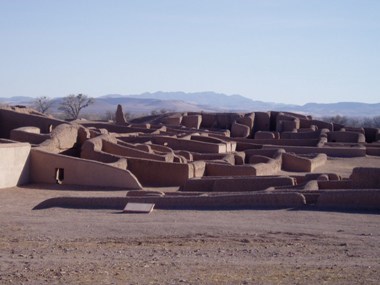
Jane Kolber Finally, many of the sites built and occupied by the ancestral Puebloans after they left Chaco are now World Heritage sites. Construction at Aztec Ruins began around 1000AD and continued until approximately 1200AD. As people began to trickle out of Chaco and eventually emigrate on a mass scale, Aztec may have become the next political or cultural center. 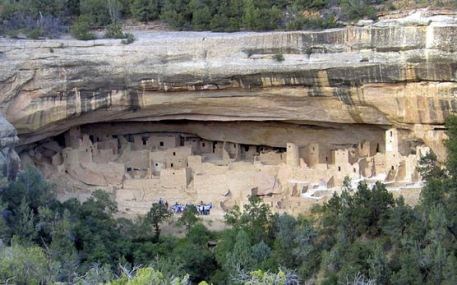
Some people went further north to occupy and expand the cliff dwellings that are now a part of Mesa Verde National Park, a World Heritage site. Still others returned to or founded the Pueblos of New Mexico and Arizona, which include the Hopi, Zuni, and Rio Grande tribes today. Taos Pueblo, whose modern tribal members are descendants of the Chacoans, is the only living Native American community to be designated a World Heritage Site and a National Historic Landmark. 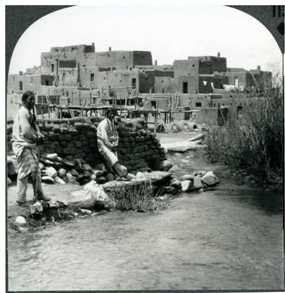
Chaco Culture deserves to be a phenomenon recognized worldwide. Such centralization of politics, economy, ceremony, and culture has not occurred in the American Southwest before or since. UNESCO World Heritage provides a framework for relating spectacular sites like those of the Chacoan world, Mesa Verde, and Taos. It affirms that these places are as important to world history as sites like the Acropolis, the Great Wall of China, Machu Picchu, Chichen Itza, and Stonehenge. |
Last updated: February 24, 2015
